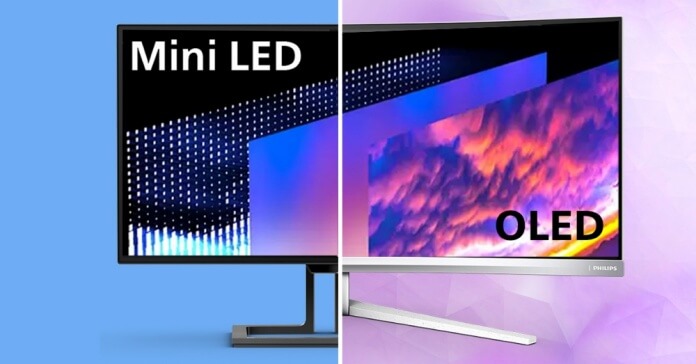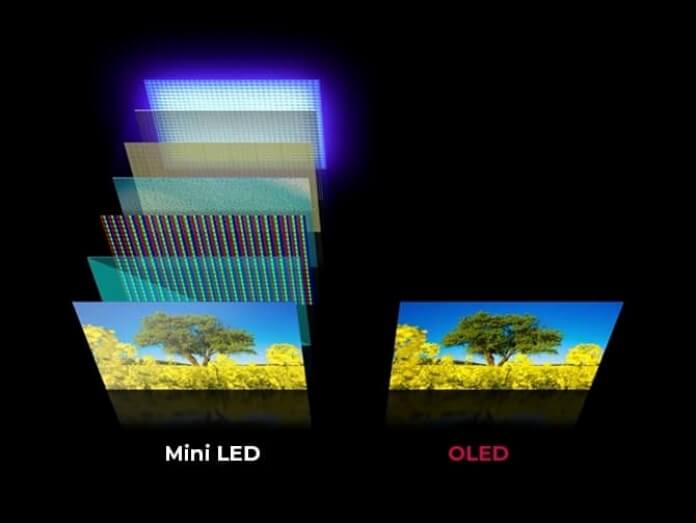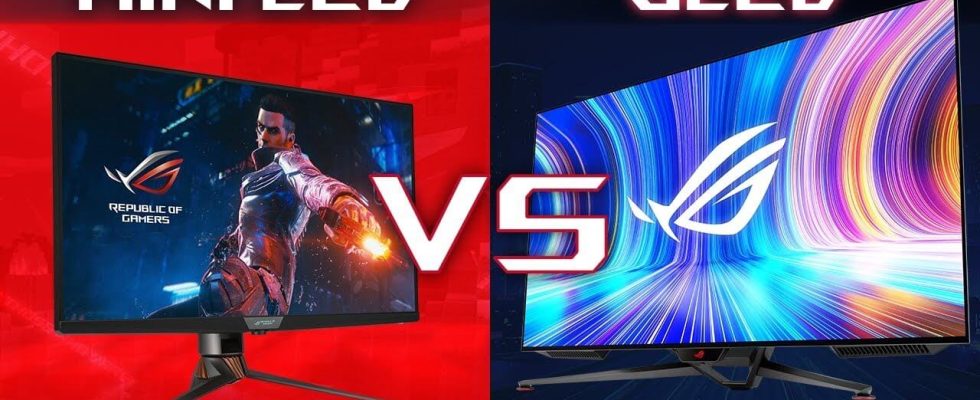The two big innovations in gaming displays over the last few years have been OLED and mini-LED displays. These two display types have transformed the HDR situation, which was pretty bad for PC gamers, and are now available on gaming monitors, laptops, and TVs. OLED and mini-LED you can find options.
But from our perspective, there’s really only one option for the best gaming experience.
Although mini-LED and OLED enhance the gaming experience with excellent HDR, OLED still has a big advantage over mini-LED and this advantage is fully revealed when gaming.
Difference Between Them
First of all, let’s start with the definition, OLED means Organic Radiating Diodes and LED just means Radiating Diodes. They seem similar, but they are vastly different. LEDs only produce light; they do not produce the color or image seen. Instead, LEDs illuminate an LCD, which creates the image you see. LED is inherently a light technology, not a display technology.
OLED provides both light and image. It doesn’t have a backlight; instead, each organic component creates its own light. Display manufacturers produce colors in different ways, and a truly detailed work is revealed. The important thing to know is, OLED’s processing of light and color We can say, as you can see LED, on the other hand, only processes light.

This might give you a clue as to what exactly the mini-LED does. With an LCD screen, the LED backlight is divided into zones. Maybe you have one large light that illuminates the full screen, or maybe you have eight strips of LEDs that divide the screen into several zones. The advantage of mini-LED, as the name suggests, comes from the fact that the physical lights are smaller. Instead of a few dozen LEDs, you can illuminate the same area with hundreds or thousands of LEDs. LED You can fill it with . We can say that Cooler Master Tempest G27Q is one of the monitors where you can see the effects of mini-LED.
With more individual LEDs, the display can control light locally. Darker areas may have less light, while brighter areas may have more light. With fewer zones or a universal LED backlight, you lose the contract. backlight, It should be at a certain brightness regardless of the content on the screen.
mini-LED, It tries to imitate what OLED does so wellr. Since OLED doesn’t need a backlight, it has no zones. Each pixel emits its own light, so it can be as bright or dark as needed, or even turn off completely. This is a more advanced technology, but surprisingly simpler than mini-LED.
Bloom and Distortions
Understanding how mini-LED and OLED differ on a technical level helps us make the experience of using them much easier. One of the big problems facing OLED versus mini-LED is “bloomSomething called ”. Bloom is a kind of lighting effect that is generally recommended to be turned off in FPS games.
With mini-LED you always have more pixels than with LED. Let’s take the Asus ROG Zephyrus M16 as an example. This laptop has a mini-LED display with a resolution of 2560 x 1600 and offers 1,024 dimming zones. If you think about it a little, each region has approximately Covers 4,000 pixels you can quickly explore.

Bloom occurs when something does not fit neatly within the boundaries of these darkening zones. For illustration purposes, let’s say you have an element that has 2,000 pixels in total. The region still has 4,000 pixels fully illuminated, creating a halo around the element. This is especially noticeable when you have something white (e.g. your cursor) on a black background. When all dimming zones are off, you can see the effect of the bloom except the area where your cursor is located.
Both mini LED and OLED deliver an outstanding HDR experience, although OLED does HDR slightly better. There’s another reason why we praise OLED for gaming.
Reaction time
OLED has tremendous response times. You’ve probably heard of this before, but it’s worth looking into on a technical level. Response time is how long it takes for a pixel to transition from one color to another. It is usually measured in a static way, switching from one gray to another (grey to gray response time), but it is important to remember that response time is constantly moving.
Lower response times don’t mean the monitor is faster, at least to your eyes. This means the monitor is clearer. If a pixel can complete transitions from one color to another faster, you’ll have fewer pixels in fewer frames still transitioning, resulting in less smearing. There are other factors that affect motion blur; Chief among these is frame persistence, but lower response times are still better if you have rapidly moving content on your screen.

This depends on the individual screen. Some mini LED backlights are faster while others are slower. Many mini LED displays can handle the additional delay caused by local dimming so well that you won’t notice it. Regardless, this is a factor that OLED doesn’t deal with.
Where Mini LED is Superior
First of all, there is an important factor that we did not focus on, such as price. Mini LED displays are generally more affordable than OLED displays. About a year ago the situation was much worse; OLEDs were sometimes close to twice the price. Even though OLED is now more expensive, the difference is much smaller.
Saving the extra money for OLED will provide a better gaming experience, not only in terms of contrast and HDR, but also in response time. At this point the prices are close enough that it’s worth spending a little more for an OLED display if you can find it. 2024 Asus ROG Zephyrus G14 We’re also seeing more OLED displays on gaming laptops like
However, if you only have the budget to buy a mini LED screen, don’t think too much. Compared to monitors like the Sony InZone M9 we saw just a few years ago, mini LED is a big step forward. OLED may be better for gaming, but mini LED still has a head start on monitors with global dimming or several edge-lit dimming zones.
